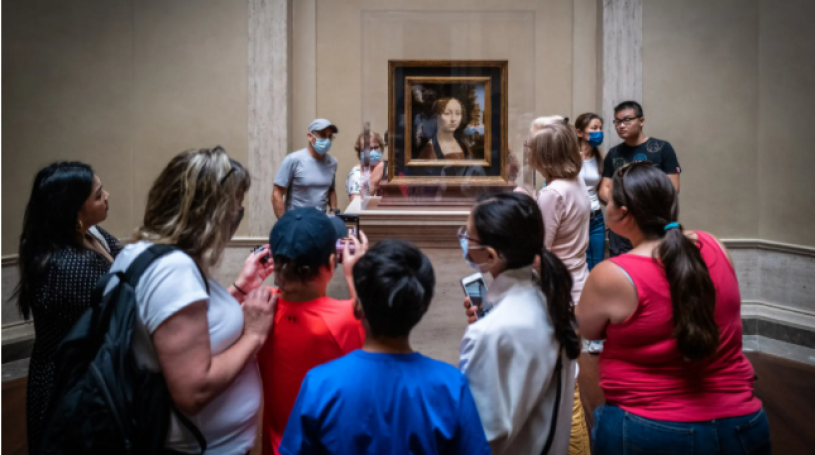NEA study shows arts sector remained major contributor to US economy even as pandemic took its toll
Since the onset of the Covid-19 pandemic two years ago, any number of dreary statistics have been released regarding the wellbeing of the arts sector. In February of 2021, for example, studies came out detailing how New York City lost two thirds of its arts and culture jobs while California lost nearly one quarter of its cultural workforce. A new report released last week by the National Endowment for the Arts (NEA) is now underscoring not just the dramatic extent to which the arts sector shrank relative to the wider US economy, but also its ability to continually create an outsized contribution to the national gross domestic product (GDP) even in the face of such losses.
The report details how the arts sector shrank at nearly twice the rate of the general economy from 2019 to 2020—falling by 6.4% when adjusted for inflation, relative to the 3.4% fall that the overall economy saw—while still contributing $876.7bn, or 4.2%, to national GDP.
To place this into context, when 2019 data was analysed by the NEA last year, it showed that in the year before the pandemic the arts sector contributed $919.7bn to the economy, or 4.3% of the national GDP. This means that despite the sector’s nearly 50% drop, its overall GDP contribution fell by only one tenth of one percent. This massive, consistent contribution also highlights how typically underappreciated the arts are in terms of their contribution to America’s economy.
According to the study, performing arts presenters and performing arts companies ranked alongside oil drilling and exploration and air transportation as the hardest hit sectors of the entire economy, with the fiscal value added by performing arts presenters crashing down nearly 73% between 2019 and 2020.
“We knew in our bones that 2020 was a devastating year. This report shows that it was the most severe economic setback for the arts in the last 22 years for which we have data,” Sunil Iyengar, director of research and analysis at the NEA, told Forbes. “The industries that are still working and thriving—including performing artists and performing arts presenters—the reason they’re thriving is because of their ingenuity.”
According to a 2019 study, roughly 34% of artists are self-employed, and because data on self-employed artists and art workers remains hard to gather, the arts sector figures cited in this article did not include the contributions of these individuals. However, the study does note that the economic contributions made by independent artists, writers and performers did fall by as much as 20.6%, and that the unemployment rate among artists, which was 3.7% in 2019, went as high as 10.3% in 2020 and is presently around 7.2%.
Under the 2020 Coronavirus Aid, Relief, and Economic Security Act (the CARES Act), self-employed people became newly eligible for enhanced unemployment, which may have been their saving grace. “We would be having a very different conversation if the federal government hadn't instituted the CARES act, including the expanded unemployment and the opportunity for self-employed contractors to take part in that unemployment, as many of the sectors in the report have large contract workforces,” Adam Fowler, director of research at Beacon Economics and the author of the 2021 “Otis Report on the Creative Economy”, told The Art Newspaper last year. The CARES act expired in September of 2021, making self-employed people no longer eligible for unemployment, and there is no available data on how much this emergency bill expiring may have affected self-employed artists and arts workers.
“I think everyone would like a more comprehensive, easy-to-understand way of articulating how valuable artists are to a variety of other sectors and what are their unique needs and support systems,” Iyengar told Forbes. “That’s something we’re continually tracking and hoping to develop through our research grants and our own work over the next few years.”

